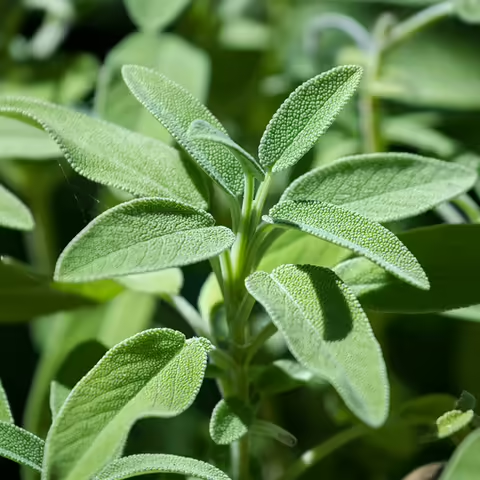Sage
Salvia officinalis
Sage is a shrubby, perennial plant that grows to about 2-3 feet tall. Foliage is gray-green with a pebbly texture. As it ages, it has a tendency to sprawl. Spikes of purple flowers appear in mid-summer.
Growing: Perennial
Sage prefers a full sun location in soils that are well prepared with compost. For sage to perform as a perennial, it must have very well drained soil especially over the winter. Sage can be grown from seeds or cuttings. Cuttings are preferred as seeds may take several years to produce harvestable plants. As plants age, they become woody and benefit from being replaced in order to maintain quality foliage for culinary use. Prune plants back in the spring just as new growth resumes. Sage is also useful as an ornamental plant in containers or in the garden.
Indoor Culture
Cuttings taken in the summer can easily be rooted and potted for use indoors during the winter. Place pots in a sunny location for best growth.
Popular Varieties
- ‘Berggarten’ – A robust plant with very large silver-gray leaves.
- Golden Sage – Chartreuse-yellow foliage enhanced by dark green splashes. Small, compact plant. Not dependably winter hardy in zone 5. Good ornamental plant.
- Purple Sage – Foliage has a purple cast. Not dependably hardy in zone 5. Good ornamental plant.
- Tricolor Sage – Foliage has white and pink streaks. Not dependably hardy in zone 5. Good ornamental plant.
Harvest
Leaves can be harvested through the season as needed. Cut 6-8 inch long stems for drying. Leaves can then be removed and stored in a sealed container. Sage can keep for up to two weeks when dry leaves are loosely packed in plastic and stored in the refrigerator.
Use
Leaves are used in fish, pork and poultry dishes. Also with vegetables and in sausages.
